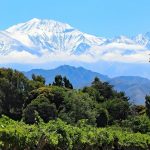Mendoza Travel Guide
Where Desert Beauty Meets Vineyard Elegance - Experience Argentina's Hidden Gem!
The Mendoza region is perhaps the world’s most famous piece of desert landscape. It is home to two of Argentina’s major claims to fame – the Andes mountain range and wine. Many visitors get lost for weeks in the region, and with good reason; who could resist lively and cosmopolitan Mendoza or the surrounding area, which boasts hundreds of wineries, often attached to luxury hotels, spas, and gourmet restaurants? Yet there is much to enjoy in the city itself; without venturing to the great plains – a bustling city of wide, leafy avenues, atmospheric plazas, and superlative restaurants, Mendoza is an addictive proposition. Even if you only give it a day or two on your itinerary, we guarantee you’ll be back for more.
Mendoza’s Rich Historical Tapestry
Mendoza in the 19th Century: A Time of Change
The Birth of Argentina’s Wine Industry
Mendoza Today: A Desert Oasis with Vibrant Nightlife
-

Barbecue of a lamb Gastronomy & Wine
If there is one overarching symbol of Argentine gastronomy, it is undoubtedly the asado (BBQ). Indeed, Argentines are artists at the grill, and it’s no exaggeration to say that meat is a massive part of the daily diet. Argentine beef is considered the best in the world and at the top of the culinary hierarchy. When the first Spaniards came to Argentina, they brought cattle, and this tradition of rearing cows for slaughter eventually became an integral part of local food culture. Today, the average Mendoza inhabitant consumes over 59kg of beef annually – impressive! But then, who could resist the aromas of Bife de Chorizo (Sirloin steak) cooking over a sizzling grill while your host offers you a glass of Malbec?
Of course, beef has no monopoly over Argentina’s innumerable parrillas (steak restaurants). In Mendoza, chefs pride themselves on chivito (young goat), which is perfectly grilled. Empanadas – small, stuffed pastries – are ubiquitous in Mendoza and are typically filled with minced beef or sometimes lamb, although this is more common in Patagonia. They make for a delicious, tasty snack.
However, the culinary world in Mendoza doesn’t just revolve around delicious cuts of grilled meat, moreish though they are. Thanks to Argentina’s Italian heritage, Italian immigrants, who settled in the late 19th century, have heavily influenced the national cuisine. As a result, pasta is heavily featured in cities such as Mendoza, with local chefs adding their creative touches to classic Italian dishes.
Nevertheless, the undisputed highlight of any trip to Mendoza is the magnificent and seemingly endless quantities of fine wine. Mendoza is now globally synonymous with wine, as vineyards stretch out in all directions in the Luyan de Cuyo region. Velvety, sublime Malbec is the apparent draw and Argentina’s most important grape variety. Whether by accident or design, we all now associate Argentina with lush, rich, and impeccably balanced Malbec – the ideal foil to local cuisine. It has long been one of our favorite wine styles.
But take the time to explore this stunningly beautiful country’s potential, and you’ll discover a varied wine industry brimming with premium and diversified wine styles. Bodegas Riglos, founded in 2002 by Dario Werthein, is one such bodega (winery) providing hard evidence that Mendoza, or Argentina, does not begin and end with Malbec. Their Cabernet Franc is justly celebrated, offering intensity, deep red fruit, freshness, and potent aromas by the bucket load. The Cabernet Sauvignon, Syrah, Bonarda, smaller amounts of Chardonnay, and Sauvignon Blanc grown across Mendoza are similarly excellent. Proof that even if you’re tired of Malbec, Mendoza can still deliver.
One trick pony? No way!
Highlights
-
Parque General San Martin
A lovely haven of tranquility, the Parque General San Martin offers a welcome rest-bite from the summer heat. Walking along the lakeshore and snoozing in the shade of the rose garden in this beautiful park is a great way to enjoy one of the city’s highlights.
-
Iglesia, Convento y Basilica de San Francisco
This is Mendoza’s most important religious building. Many people consider the image at this church miraculous because it survived the terrible earthquake of 1968. Of particular note is the Virgin’s semicircular chamber, where visitors leave tributes to her and San Jose de San Martin, the general who liberated Argentina from the Spanish.
-
Museo Fundacional
This fascinating museum, protects excavations of the colonial cabildo (town council) destroyed by an earthquake in 1861. At that time, the city’s geographical focus shifted west and south of its present location. A series of detailed exhibits depicts Mendoza’s colorful history.
Recommended for you
More information
If you would like us to customize an exclusive luxury tour, contact us and let us know your travel plans. We offer luxury food and wine tours for private groups of a mininium two guests. In addition, all of our private, chauffeured tours are available year-round upon request.


